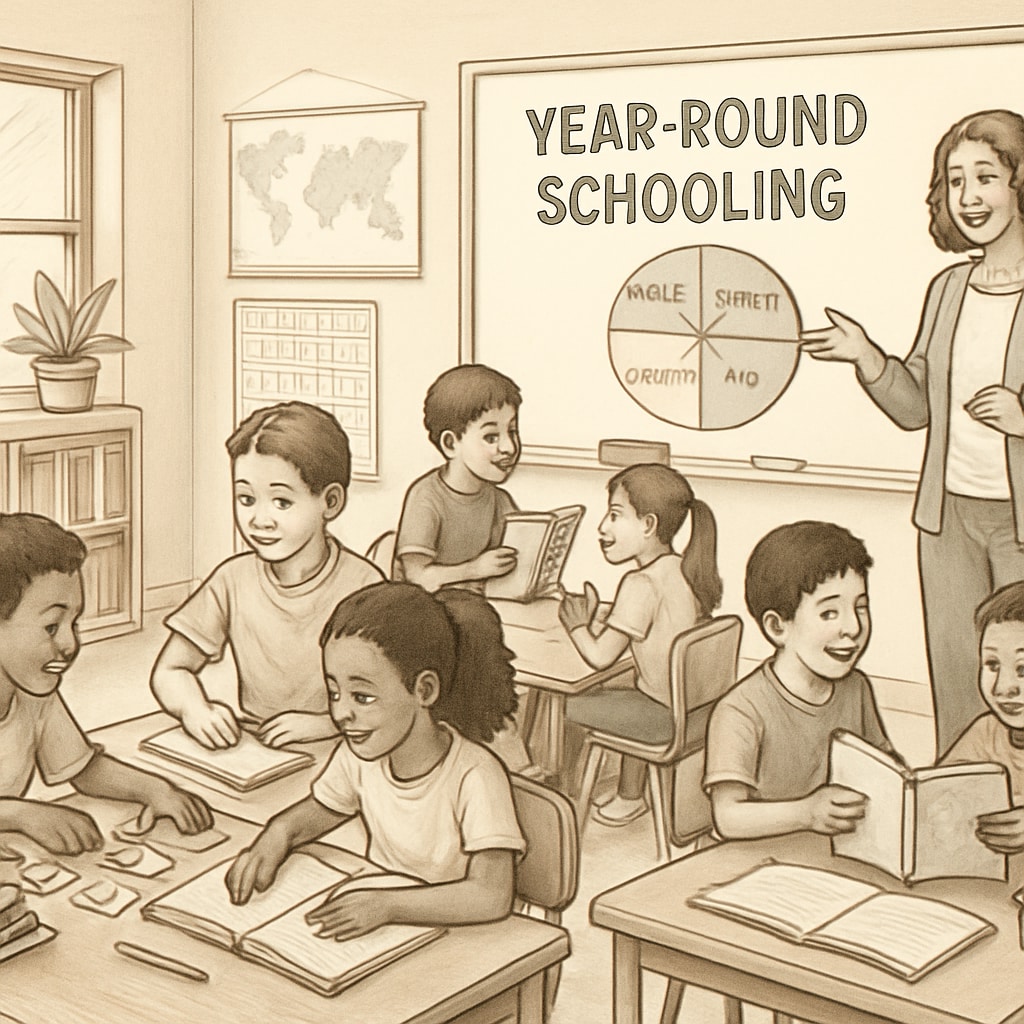Year-round schooling has emerged as a transformative solution to address the challenges of traditional education models, particularly the issue of summer learning loss. By replacing the long summer vacation with a more balanced schedule, such as the “one week on, one week off” approach, schools can significantly improve knowledge retention among K12 students. This innovative model not only reduces the academic regression typically observed after extended breaks but also offers a fresh perspective on how education can evolve to meet modern needs.
Rethinking Education: The Problems with Long Summer Breaks
The traditional school calendar, which includes a lengthy summer vacation, has been a staple of education systems worldwide. However, research consistently highlights its drawbacks, particularly its impact on knowledge retention. During long breaks, students often experience a phenomenon known as “summer learning loss,” where they forget a significant portion of what they learned during the academic year. This effect is most pronounced in core subjects such as math and reading.
For example, a study by the National Summer Learning Association found that students can lose up to two months of mathematical skills over the summer. Additionally, it can take weeks or even months for teachers to review previous material at the start of a new school year, further delaying progress. These inefficiencies indicate that the traditional calendar may no longer be the optimal approach for modern education.

The Year-Round Schooling Model: A New Approach
Year-round schooling offers a compelling alternative to the traditional system. Instead of a long summer break, this model distributes vacations more evenly throughout the year. One innovative variation is the “one week on, one week off” schedule. Under this system, students attend classes for one week and then take a short, structured break before returning to school. This cycle repeats throughout the year, creating a continuous, balanced learning environment.
This approach has several advantages:
- Enhanced Knowledge Retention: Regular breaks prevent burnout while maintaining consistent engagement with the material.
- Reduced Learning Loss: Shorter breaks reduce the likelihood of students forgetting key concepts.
- Personalized Learning Pace: The structure allows students to absorb information more effectively without feeling overwhelmed.
Moreover, this model aligns better with the brain’s natural learning rhythms, which benefit from regular intervals of rest and activity. By eliminating the “all or nothing” approach of the traditional calendar, year-round schooling fosters a more sustainable and effective learning process.

Potential Challenges and Solutions
Despite its advantages, transitioning to a year-round schooling system is not without challenges. For instance, some parents and educators express concerns about scheduling conflicts with traditional vacation periods or extracurricular activities. Additionally, implementing this model requires adjustments in school infrastructure and teacher training.
However, these challenges are not insurmountable. Schools can collaborate with parents, community organizations, and policymakers to develop flexible solutions. For example:
- Offering optional enrichment programs during off weeks to accommodate working parents.
- Providing professional development for teachers to adapt to the new schedule.
- Leveraging technology to support continuous learning outside the classroom.
By addressing these concerns proactively, schools can ensure a smooth transition to this innovative model.
The Future of Education: A Balanced Approach
As education systems evolve to meet the demands of the 21st century, year-round schooling represents a forward-thinking solution to longstanding problems. By replacing outdated, inefficient calendars with balanced schedules, schools can enhance knowledge retention, reduce learning gaps, and better prepare students for future challenges.
In conclusion, the “one week on, one week off” model is more than just an alternative; it’s a paradigm shift in how we think about education. By prioritizing consistent engagement and balanced rest, this approach has the potential to revolutionize learning outcomes for K12 students worldwide.
Learn more about year-round schooling on Wikipedia
Explore education innovations on Britannica
Readability guidance: This article uses short paragraphs, clear transitions, and lists to summarize key points. It maintains a balance between academic rigor and accessibility, ensuring a broad audience can understand the content.


